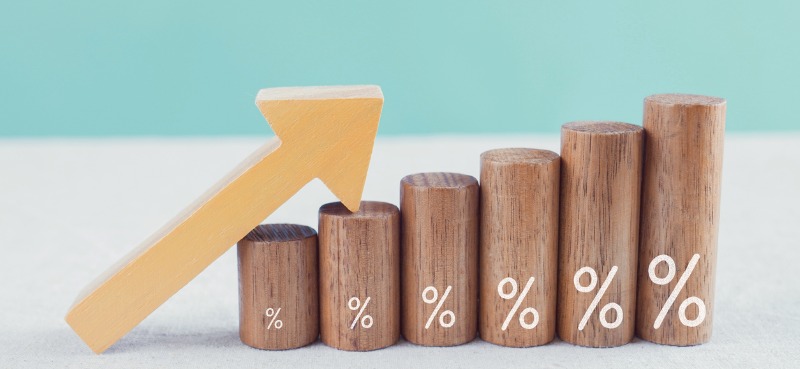Is your rally hat on?
If not, it should be.
Last week, we saw a violent rotation happen in the stock market. The massive money shift sent the major U.S. averages soaring to all-time highs.
If we look closer, we can see some important details. For example, one segment of the market—value stocks—rallied more than the rest of the market.
There are signs of a “catch-up trade” happening… where stocks that lagged the rest of the market for most of 2020 are making the biggest gains.
Let’s take a quick look back at last week’s rally…
The biggest move happened on Monday, after Pfizer and its German partner, BioNTech, announced positive initial results for their COVID vaccine. This rally came on the heels of the post-election surge we saw two weeks ago.
Back in September, I explained how stocks tend to move around an election. In short, “Big Money” investors tend to sell stocks heading into election season. But after the election, we tend to see money flood into stocks.
And that’s exactly how things played out this year. We’re seeing the post-election rally happening now, but with a twist…
As I mentioned above, the “catch-up trade” means that laggards are seeing most of the inflows. Meanwhile, their counterparts like momentum stocks have underperformed in recent weeks.
And that makes sense. An effective vaccine could shorten the timetable for an economic recovery. A quicker recovery is great news for companies that suffered during the pandemic. Their stocks now look underpriced compared to those that thrived during the shutdown.
That’s why Wall Street was crazy about small-cap stocks last week. The Russell 2000 ETF (IWM) soared 6.04%, easily outpacing the 2.27% gain in the S&P 500 ETF (SPY).
As I’ll explain, I think this mega rotation has further to go. And I see it benefiting three specific market sectors.
Stocks are nowhere near overbought
Supply and demand can warn us when markets are overheated. Overbought conditions tend to look similar from a data standpoint: everyone is bullish. When that happens, all sectors go up fast.
That’s not the case now… But let’s take a closer look.
The way I like to look at supply and demand is through the lens of Big Money. The MAPsignals Big Money Index (BMI) tries to track where the big money is headed. If the index is rising, it means that stocks should climb. If it’s falling, stocks are likely to decline.
And if you look at the chart below, things look great right now…
Looking at the above chart, what sticks out to me is that the BMI is still far below the red line. When the yellow line crosses above the red line, it indicates that stocks are overbought.
But, more importantly, I see the muted action in the index forecasting higher market levels in the coming weeks. That’s because the BMI is tracking five weeks of data. Once the selloff from two weeks ago falls out of the five-week window, the index should vault higher.
When all stocks are powering higher, it’s easy for the BMI to ramp. When there is a rotation, though, the index can tread water until there is a unified push into stocks. But, since the selling from two weeks ago is holding the index back, I expect things to rise in the coming weeks.
So, where’s the Big Money betting?
Three sectors that will benefit in a reopened economy
Each of the following sectors should benefit in the near term:
- Industrials
- Financials
- Real estate
First up are industrial stocks. The case for a strong industrial sector should come as no surprise. They’re some of the most economically-sensitive stocks in the entire market. As people are able to leave their homes, they’ll begin to build things again… and they’ll be traveling more. All of that requires machines—the focus of industrial companies.
And while this narrative makes sense, I’m more interested in the data. Do the numbers suggest industrials are ready to rally?
Below, you can see the BMI for the industrial sector ETF (XLI). The index tracks the level of buying going into a particular sector. If the green line is increasing, it means that big money is flowing into it.
And as you can see below, the green line is currently rising for industrial stocks…
Next, let’s take a look at financial stocks. There’s a strong case for improving conditions in the financial sector. If the economy is healing, that means growth. And when economic growth increases, interest rates tick higher. That’s a major reason for banks and lenders to catch a bid.
Looking at the BMI index for the financial sector ETF (XLF), you can see the green line is starting to surge higher. That’s a great sign for the future performance of this sector.
Our third and final sector is real estate. Real estate stocks have been battered during 2020. The stay-at-home trend has made it very difficult for malls and commercial real estate. Less foot traffic means lower profits for retailers and their landlords.
Below, you can see the BMI for the real estate sector ETF (IYR). Just like in our previous two examples, the green line recently began to surge higher.
Again, the most important thing to look for in the above charts is the green line, which tracks where big institutional investors are putting their money. In all three charts, the green line is rising.
In general, investors shouldn’t fight the trend… It could be just getting started.
The latest data matches my commentary last week, when I said we have liftoff. I see many positives for stocks overall, but the three sectors I mentioned above should lead the way in the near term.
Don’t take your rally hat off yet.
The party may be just getting started…
Editor’s note:
We’re seeing huge moves in a lot of economic recovery plays… And Frank just released his favorite rebound pick to Curzio Research Advisory members: a small-cap with a game-changing acquisition… and a massive new growth market.
Right now, this company is trading for a steal… so don’t wait until the rest of the market catches on. Learn how to access it—along with many other stocks set to soar as the economy recovers.




















